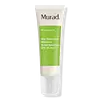What's inside
What's inside
 Key Ingredients
Key Ingredients

 Benefits
Benefits

 Concerns
Concerns

 Ingredients Side-by-side
Ingredients Side-by-side

Homosalate 4%
Skin ConditioningEthylhexyl Salicylate 4%
UV AbsorberButyl Methoxydibenzoylmethane 2%
UV AbsorberOctocrylene 2%
UV AbsorberWater
Skin ConditioningC12-15 Alkyl Benzoate
AntimicrobialGlycerin
HumectantHydrogenated Vegetable Glycerides Citrate
EmollientTapioca Starch
Butyrospermum Parkii Butter
Skin ConditioningCaprylyl Methicone
Skin ConditioningCetearyl Alcohol
EmollientDicaprylyl Carbonate
EmollientHelianthus Annuus Seed Oil
EmollientDiethylhexyl 2,6-Naphthalate
EmollientEthoxydiglycol
HumectantPhenyl Trimethicone
Skin ConditioningSodium Polyacrylate
AbsorbentButylene Glycol
HumectantVitis Vinifera Seed Oil
EmollientJojoba Alcohol
EmollientPotassium Jojobate
Skin ConditioningPanthenol
Skin ConditioningArginine
MaskingAllantoin
Skin ConditioningBisabolol
MaskingDioscorea Villosa Root Extract
Skin ConditioningDisodium EDTA
Octadecyl Di-T-Butyl-4-Hydroxyhydrocinnamate
AntioxidantPersea Gratissima Oil
Skin ConditioningTocopheryl Acetate
AntioxidantBenzoic Acid
MaskingDehydroacetic Acid
PreservativeDisodium Adenosine Triphosphate
Skin ConditioningDipotassium Glycyrrhizate
HumectantPolymethylsilsesquioxane
Selaginella Lepidophylla Extract
EmollientTrifolium Pratense Flower Extract
AstringentPropylene Glycol
HumectantBetaine
HumectantInositol
HumectantTaurine
BufferingTrehalose
HumectantUrea
BufferingYeast Amino Acids
HumectantProline
Skin ConditioningGlycine
BufferingSorbitol
HumectantCarica Papaya Fruit Extract
Skin ConditioningAlgin
MaskingSodium Hyaluronate
HumectantHydrolyzed Soy Protein
HumectantCopper Tripeptide-1
Skin ConditioningIris Florentina Root Extract
MaskingPhenoxyethanol
PreservativeParfum
MaskingLimonene
PerfumingLinalool
PerfumingHomosalate 4%, Ethylhexyl Salicylate 4%, Butyl Methoxydibenzoylmethane 2%, Octocrylene 2%, Water, C12-15 Alkyl Benzoate, Glycerin, Hydrogenated Vegetable Glycerides Citrate, Tapioca Starch, Butyrospermum Parkii Butter, Caprylyl Methicone, Cetearyl Alcohol, Dicaprylyl Carbonate, Helianthus Annuus Seed Oil, Diethylhexyl 2,6-Naphthalate, Ethoxydiglycol, Phenyl Trimethicone, Sodium Polyacrylate, Butylene Glycol, Vitis Vinifera Seed Oil, Jojoba Alcohol, Potassium Jojobate, Panthenol, Arginine, Allantoin, Bisabolol, Dioscorea Villosa Root Extract, Disodium EDTA, Octadecyl Di-T-Butyl-4-Hydroxyhydrocinnamate, Persea Gratissima Oil, Tocopheryl Acetate, Benzoic Acid, Dehydroacetic Acid, Disodium Adenosine Triphosphate, Dipotassium Glycyrrhizate, Polymethylsilsesquioxane, Selaginella Lepidophylla Extract, Trifolium Pratense Flower Extract, Propylene Glycol, Betaine, Inositol, Taurine, Trehalose, Urea, Yeast Amino Acids, Proline, Glycine, Sorbitol, Carica Papaya Fruit Extract, Algin, Sodium Hyaluronate, Hydrolyzed Soy Protein, Copper Tripeptide-1, Iris Florentina Root Extract, Phenoxyethanol, Parfum, Limonene, Linalool
Water
Skin ConditioningGlycerin
HumectantCetearyl Alcohol
EmollientCaprylic/Capric Triglyceride
MaskingCetyl Alcohol
EmollientCeteareth-20
CleansingPetrolatum
EmollientPotassium Phosphate
BufferingCeramide NP
Skin ConditioningCeramide AP
Skin ConditioningCeramide EOP
Skin ConditioningCarbomer
Emulsion StabilisingDimethicone
EmollientBehentrimonium Methosulfate
Sodium Lauroyl Lactylate
EmulsifyingSodium Hyaluronate
HumectantCholesterol
EmollientPhenoxyethanol
PreservativeDisodium EDTA
Dipotassium Phosphate
BufferingTocopherol
AntioxidantPhytosphingosine
Skin ConditioningXanthan Gum
EmulsifyingEthylhexylglycerin
Skin ConditioningWater, Glycerin, Cetearyl Alcohol, Caprylic/Capric Triglyceride, Cetyl Alcohol, Ceteareth-20, Petrolatum, Potassium Phosphate, Ceramide NP, Ceramide AP, Ceramide EOP, Carbomer, Dimethicone, Behentrimonium Methosulfate, Sodium Lauroyl Lactylate, Sodium Hyaluronate, Cholesterol, Phenoxyethanol, Disodium EDTA, Dipotassium Phosphate, Tocopherol, Phytosphingosine, Xanthan Gum, Ethylhexylglycerin
 Reviews
Reviews

Ingredients Explained
These ingredients are found in both products.
Ingredients higher up in an ingredient list are typically present in a larger amount.
Cetearyl alcohol is a mixture of two fatty alcohols: cetyl alcohol and stearyl alcohol. It is mainly used as an emulsifier. Emulsifiers help prevent the separation of oils and products. Due to its composition, it can also be used to thicken a product or help create foam.
Cetearyl alcohol is an emollient. Emollients help soothe and hydrate the skin by trapping moisture.
Studies show Cetearyl alcohol is non-toxic and non-irritating. The FDA allows products labeled "alcohol-free" to have fatty alcohols.
This ingredient is usually derived from plant oils such as palm, vegetable, or coconut oils. There is debate on whether this ingredient will cause acne.
Due to the fatty acid base, this ingredient may not be Malassezia folliculitis safe.
Learn more about Cetearyl AlcoholDisodium EDTA plays a role in making products more stable by aiding other preservatives.
It is a chelating agent, meaning it neutralizes metal ions that may be found in a product.
Disodium EDTA is a salt of edetic acid and is found to be safe in cosmetic ingredients.
Learn more about Disodium EDTAGlycerin is already naturally found in your skin. It helps moisturize and protect your skin.
A study from 2016 found glycerin to be more effective as a humectant than AHAs and hyaluronic acid.
As a humectant, it helps the skin stay hydrated by pulling moisture to your skin. The low molecular weight of glycerin allows it to pull moisture into the deeper layers of your skin.
Hydrated skin improves your skin barrier; Your skin barrier helps protect against irritants and bacteria.
Glycerin has also been found to have antimicrobial and antiviral properties. Due to these properties, glycerin is often used in wound and burn treatments.
In cosmetics, glycerin is usually derived from plants such as soybean or palm. However, it can also be sourced from animals, such as tallow or animal fat.
This ingredient is organic, colorless, odorless, and non-toxic.
Glycerin is the name for this ingredient in American English. British English uses Glycerol/Glycerine.
Learn more about GlycerinPhenoxyethanol is a preservative that has germicide, antimicrobial, and aromatic properties. Studies show that phenoxyethanol can prevent microbial growth. By itself, it has a scent that is similar to that of a rose.
It's often used in formulations along with Caprylyl Glycol to preserve the shelf life of products.
Sodium Hyaluronate is hyaluronic acid's salt form. It is commonly derived from the sodium salt of hyaluronic acid.
Like hyaluronic acid, it is great at holding water and acts as a humectant. This makes it a great skin hydrating ingredient.
Sodium Hyaluronate is naturally occurring in our bodies and is mostly found in eye fluid and joints.
These are some other common types of Hyaluronic Acid:
Learn more about Sodium HyaluronateWater. It's the most common cosmetic ingredient of all. You'll usually see it at the top of ingredient lists, meaning that it makes up the largest part of the product.
So why is it so popular? Water most often acts as a solvent - this means that it helps dissolve other ingredients into the formulation.
You'll also recognize water as that liquid we all need to stay alive. If you see this, drink a glass of water. Stay hydrated!
Learn more about Water